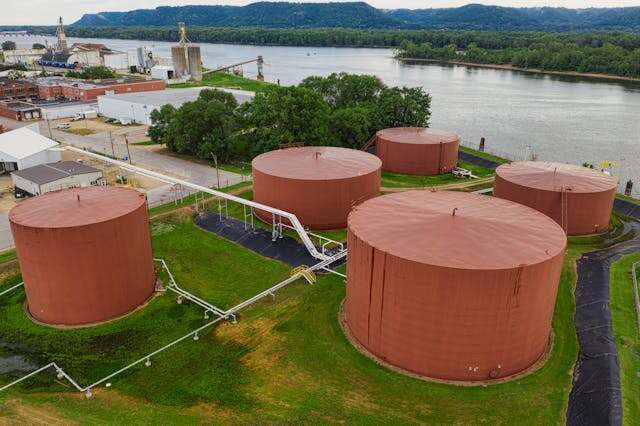
- admin
- May 7, 2024
Optimizing Crop Preservation: The Importance Of Grain Storage Silos
Grain storage silos play a pivotal role in modern agriculture. It actively preserve harvested crops like corn, wheat, and soybeans. These cylindrical structures go beyond mere containers; they actively guard grain quality, ensuring future use and meeting market demand. This blog explores the importance of grain storage silos, their construction materials, and the crucial ventilation systems that actively maintain optimal grain conditions.
Understanding Grain Storage Silos:
Grain storage silos securely store bulk quantities of grains. They bridge the gap between harvest and market demand, enabling farmers to store produce until it’s ready for sale. These silos accommodate diverse agricultural needs, ranging from small family farms to large-scale commercial enterprises, with various sizes available.
Construction Materials:
It is predominantly constructed from two primary materials: steel and concrete.
- Steel Silos: Steel silos are tough and versatile. Farmers put them together on-site using pre-made steel panels, which saves money. They’re known for staying strong against things like rust and pests, especially keeping grains safe for a long time.
- Concrete Silos: Concrete silos are well-known for being strong and lasting a long time. Another key point, they’re usually built with reinforced concrete, which protects them from changes in moisture and temperature. While they might cost more to build at first, at the present time they’re a good choice for big grain storage places because they last a long time and stay strong.
Ventilation Systems Grain Storage Silos:
Proper ventilation is essential for maintaining grain quality within storage silos. Ventilation systems help regulate temperature, moisture levels, and airflow, preventing the growth of mold, fungi, and insect infestations
- Aeration Fans: Aeration fans are like the silo’s air movers. They keep the grain cool when it’s hot outside and prevent moisture buildup when it’s cold. As a result this helps stop the grain from going bad.
- Temperature Monitoring: Temperature sensors placed throughout the silo keep an eye on temperature changes. This info helps farmers spot any spots getting too hot or areas that need attention. With this data, they can act quickly to keep the grain in good shape.
- Moisture Control: Moisture sensors and controllers work to keep the right humidity levels inside the silo. This stops too much moisture from building up, which could spoil the grain. Managing moisture well is super important for keeping the grains healthy and ready to sell.
Conclusion:
In today’s farming, grain storage silos are vital. They give farmers a dependable way to keep their harvested crops safe. Whether made of steel or concrete, these tall cylinders protect grains like corn, wheat, and soybeans, keeping them fresh and ready to sell. With advanced ventilation, these silos help farmers grow more crops to feed the world.
- Grain Storage Silos
Category
- Above Ground Fuel Tanks
- Above Ground Gas Storage Tank
- Above Ground Storage Tanks
- Above Ground Water Storage Tanks
- Agricultural Tanks
- Chemical storage Tanks
- Diesel Fuel Storage Tanks
- Diesel Storage Tanks
- Exernal FloatingRoof Tanks
- Farm Water Tank
- Fiberglass Oil Tanks
- Fiberglass Septic Tanks
- Fiberglass Tanks
- Fiberglass Underground Fuel Storage Tanks
- Field Erected Tanks
- Floating Roof Tank
- Food and Beverage Tanks
- Fuel tank
- Industrial Chemical Storage Tanks
- Industrial Gas Tanks
- Industrial Hot Water Storage Tanks
- industrial hot water tank
- Industrial Plastic Tanks
- Industrial Storage Tanks
- Industrial Tank heating pads
- industrial tanks
- Natural gas
- Natural gas vs Propane
- oil storage tank
- Oil Storage Tanks
- Peracitic Acid
- Petroleum Tanks
- Residential gasoline storage tanks
- Residential Water Storage Tanks
- Sodium Hydroxide Storage Requirements
- Sodium Hypochlorite Storage Tanks
- Steel Storage Tanks
- storage tank failure prevention
- Storage Tanks
- Sulfuric Acid Tanks
- Uncategorized
- UnderGround Storage Tanks
- Waste water tank
- Water Storage Tanks

 Tank Size Calculator
Tank Size Calculator





